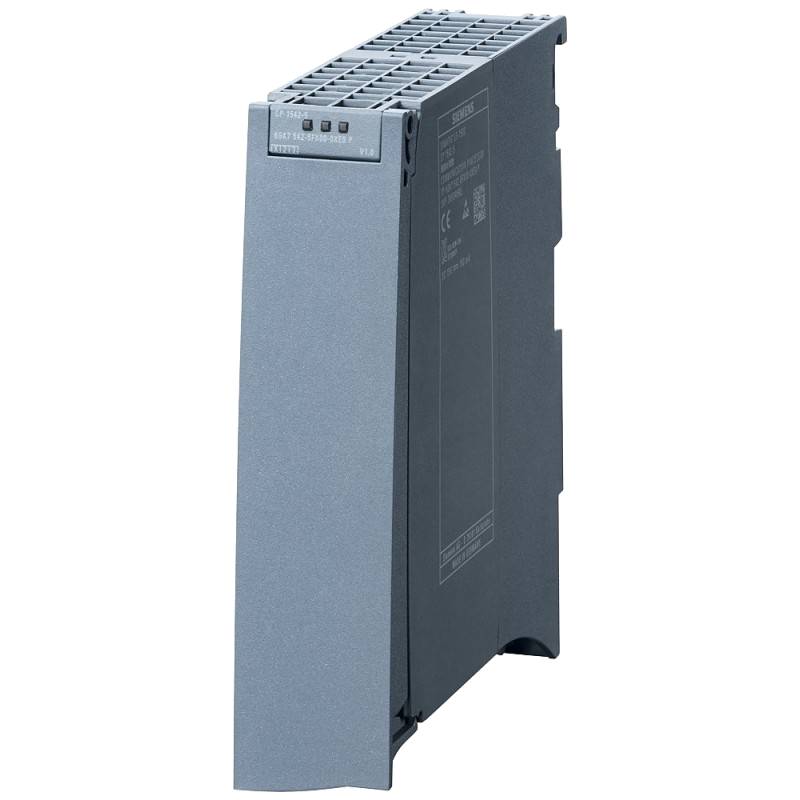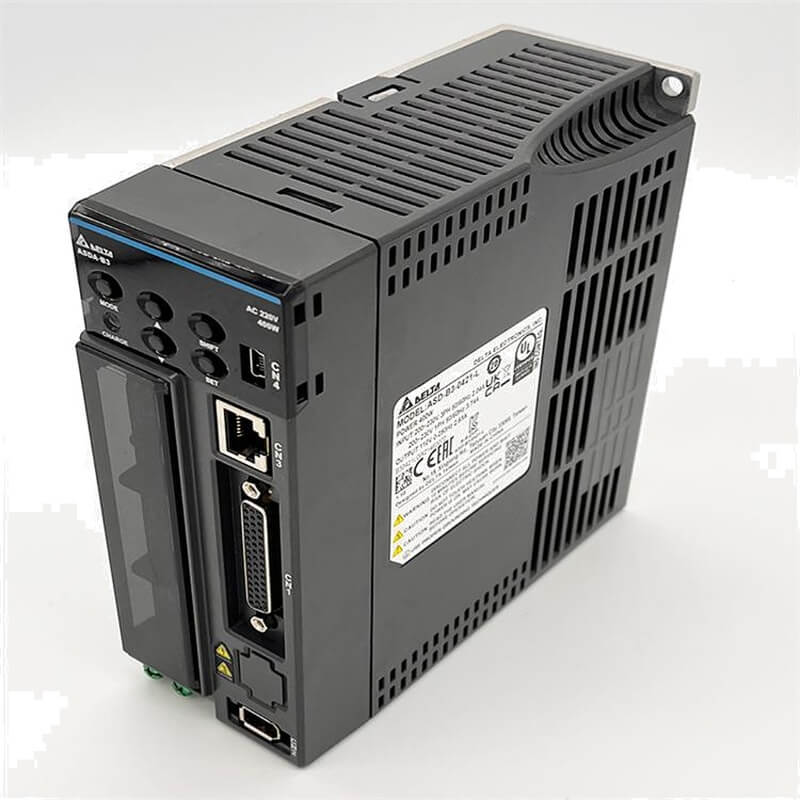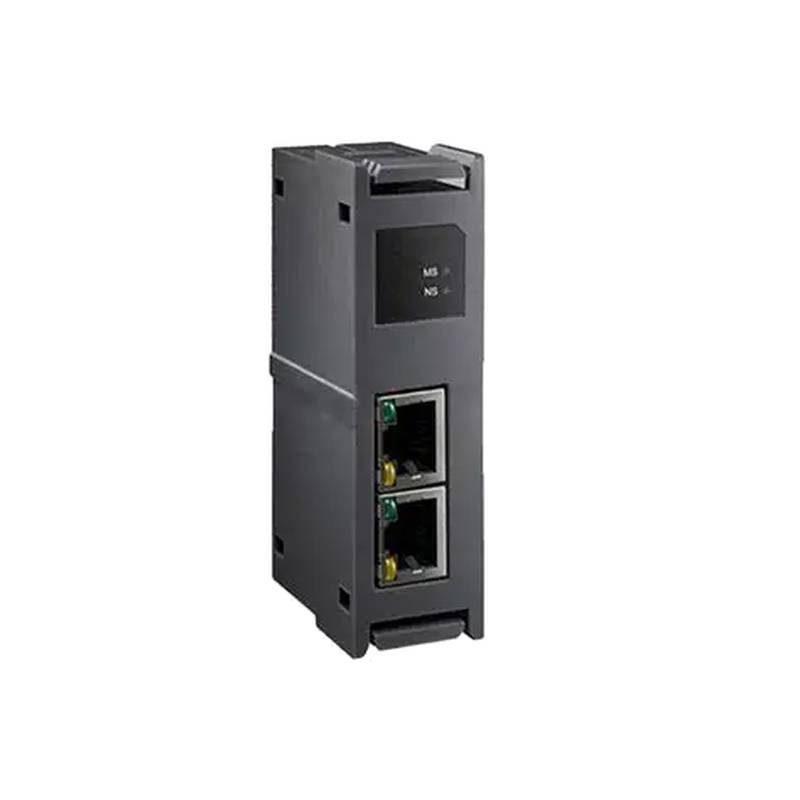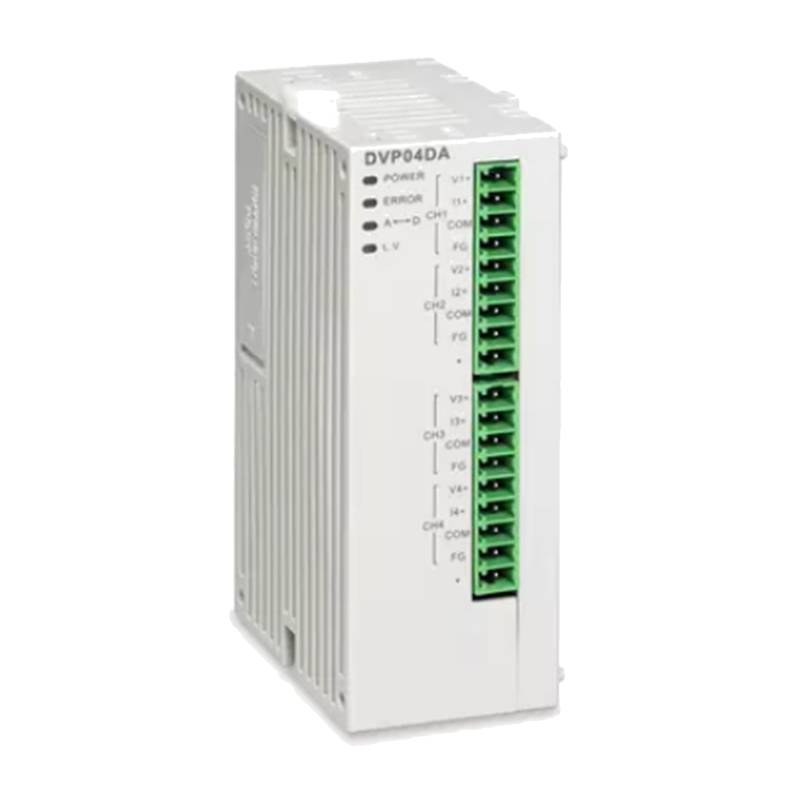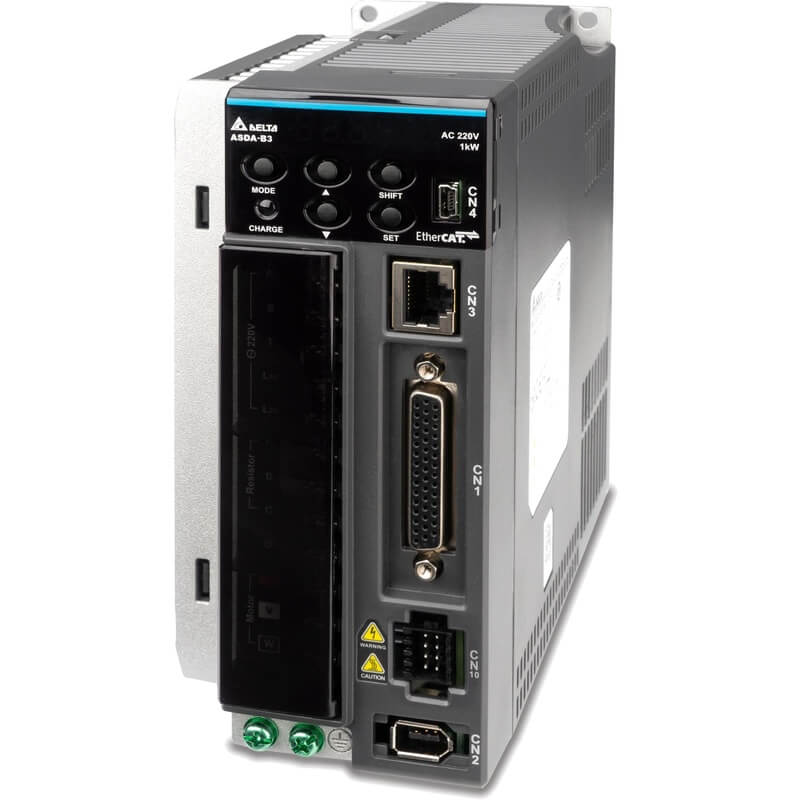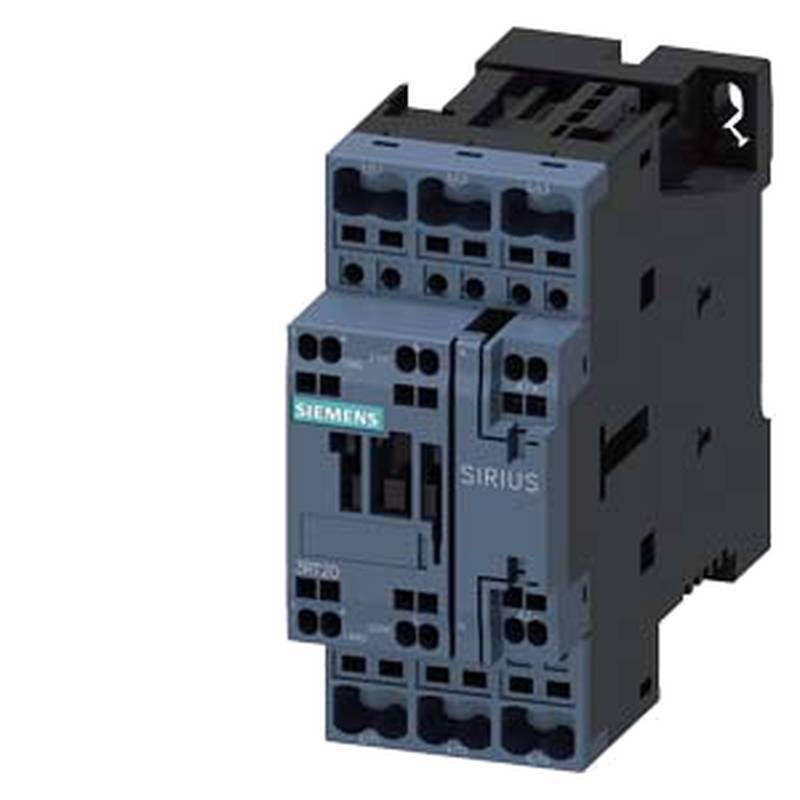
The Delta DVP32ES200T DC Output Programmable Control Central Unit stands as a robust and versatile solution for a wide array of industrial automation tasks. This compact yet powerful PLC boasts essential features such as high-speed processing, extensive I/O capabilities, and built-in communication ports, making it a cornerstone for efficient control systems. Its DC output configuration is particularly advantageous for applications requiring precise power management and direct interface with DC-powered actuators and sensors.
Product Specifications
| Feature | Specification |
| :---------------------- | :------------------------------------------- |
| Model | DVP32ES200T |
| Output Type | DC Output |
| Max. Output Points | 16 |
| Max. Input Points | 16 |
| Program Capacity | 4K Steps |
| Communication Ports | RS-232, RS-485 |
| Power Supply | 24VDC |
| Expansion Capability | Up to 256 I/O points with expansion modules |
Core Features & Market Positioning
The Delta DVP32ES200T is engineered for reliability and performance, positioning itself as a cost-effective yet capable control unit in the competitive PLC market. Its key differentiator lies in its balance of processing power, modular expansion potential, and ease of integration. The unit supports standard programming languages, allowing for seamless adoption by automation engineers familiar with industry-standard platforms. This makes it an attractive choice for small to medium-sized applications where advanced functionality is required without the complexity or cost of higher-end controllers. Its DC output is optimized for direct interfacing with a multitude of sensors and actuators commonly found in machine control and process automation.
Key Application Scenarios
This Delta PLC is ideally suited for a diverse range of industrial applications. It excels in controlling automated assembly lines, packaging machinery, and material handling systems where precise sequencing and I/O management are critical. Furthermore, its robust design and flexible programming capabilities make it a strong candidate for standalone machine control, such as in CNC equipment, injection molding machines, and textile machinery. The DVP32ES200T also finds application in building automation, managing HVAC systems and lighting controls with its reliable DC output for interfacing with low-voltage devices.
Practical System Integration Guidance
Integrating the Delta DVP32ES200T into existing or new systems is streamlined through its standard communication protocols and straightforward wiring practices. The unit supports RS-232 and RS-485, enabling easy connection to HMIs, SCADA systems, and other PLCs. For wiring, ensure proper grounding and observe polarity for all DC inputs and outputs to prevent damage and ensure correct operation. The Delta ISPSoft programming software facilitates project development, offering intuitive logic design and parameter configuration. Users can leverage pre-built function blocks and libraries to accelerate development, especially for complex motion control or data logging tasks.
Operation and Risk Mitigation
Safe and efficient operation of the Delta DVP32ES200T hinges on adhering to standard industrial safety protocols. Always ensure the unit is powered down before making any wiring changes. Proper ventilation is crucial, as the unit generates heat during operation. Referencing the official Delta manual for specific error codes is paramount for troubleshooting; common issues might involve input signal anomalies or communication failures, often rectifiable by checking wiring and program logic. Implementing watchdog timers within the program can mitigate risks associated with unexpected program halts, ensuring a rapid return to a safe state.
Scalability & Long-Term Value
The Delta DVP32ES200T offers significant scalability, allowing systems to grow with evolving operational demands. Its modular design permits the addition of various expansion modules, including digital and analog I/O, temperature modules, and communication interface cards, enabling expansion up to 256 I/O points. This ensures that the initial investment remains valuable as the automation requirements increase. Furthermore, Delta's commitment to supporting its product lines and the inherent compatibility of the DVP series with industrial Ethernet protocols facilitate integration into broader Industrial Internet of Things (IIoT) frameworks and digital manufacturing initiatives, enhancing long-term operational efficiency and data accessibility.
---
Frequently Asked Questions (FAQs)
What are the primary advantages of the Delta DVP32ES200T?
The DVP32ES200T offers a compelling blend of cost-effectiveness and robust functionality for industrial automation. Its compact size and extensive I/O capabilities make it suitable for space-constrained applications. The DC output is ideal for precise control of low-voltage devices, enhancing system efficiency and reliability.
It provides high-speed processing and supports a generous program capacity, allowing for complex logic and control sequences. The unit is also designed for easy integration with other automation components via its standard communication ports.
This PLC is highly scalable, allowing for expansion up to 256 I/O points with compatible modules. This ensures that the system can adapt to future growth and evolving automation needs without requiring a complete system overhaul.
How do I program the Delta DVP32ES200T?
Programming the DVP32ES200T is achieved using Delta's dedicated ISPSoft software, which supports various IEC 61131-3 programming languages. Engineers can utilize Ladder Diagram (LD), Function Block Diagram (FBD), and other common formats to develop control logic. The software provides a user-friendly interface for writing, debugging, and downloading programs to the PLC.
The ISPSoft environment offers features such as online monitoring, force I/O commands, and data logging capabilities, which are essential for efficient development and troubleshooting. It also includes extensive libraries of pre-built function blocks for common industrial tasks, accelerating the engineering process.
Configuration of communication parameters, I/O modules, and special function units is also handled within ISPSoft. This integrated approach ensures that all aspects of the PLC's operation can be managed from a single, comprehensive software platform.
What type of applications is the Delta DVP32ES200T best suited for?
This PLC is exceptionally well-suited for small to medium-sized automation tasks across various industries. It excels in controlling discrete manufacturing equipment like packaging machines, material handling systems, and assembly lines where precise sequential control is paramount. Its DC output configuration is particularly beneficial for applications requiring direct interfacing with DC-powered sensors, solenoids, and motors.
Beyond manufacturing, the DVP32ES200T is a strong candidate for building automation systems, managing HVAC controls, lighting, and access systems efficiently. Its reliable performance and compact footprint also make it ideal for standalone machine control in sectors such as food and beverage processing, textiles, and plastics.
The unit's scalability allows it to adapt to evolving demands, making it a valuable long-term investment for applications that might start simple but require future expansion. This versatility ensures its relevance across a broad spectrum of industrial and commercial automation needs.
Can the Delta DVP32ES200T be integrated with other Delta products or third-party devices?
Yes, the Delta DVP32ES200T is designed for seamless integration within Delta's automation ecosystem and with various third-party industrial devices. It features built-in RS-232 and RS-485 communication ports, supporting industry-standard protocols like Modbus RTU. This allows for easy connection to Delta's HMIs, VFDs, and servo drives, as well as controllers from other manufacturers.
The unit's compatibility with standard communication protocols means it can readily exchange data with SCADA systems, industrial PCs, and other PLCs. This interoperability is crucial for building comprehensive and centralized automation architectures. Utilizing these communication capabilities, engineers can create complex networks for monitoring and control across multiple devices and locations.
Furthermore, Delta offers a range of expansion modules that enhance the DVP32ES200T's communication capabilities, including Ethernet modules, enabling integration into more advanced industrial networks and IIoT platforms. This ensures the PLC remains a viable component in modern, connected factories.
What are the power requirements for the Delta DVP32ES200T?
The Delta DVP32ES200T operates on a 24VDC power supply. This is a common voltage level in industrial control systems, ensuring compatibility with standard power distribution units and transformers. It is crucial to use a regulated and stable 24VDC power source to guarantee optimal performance and longevity of the PLC.
When connecting the power supply, ensure that the polarity is correctly observed; reversing the polarity can lead to damage to the unit. The power input terminals are clearly marked on the PLC, and it is recommended to use appropriate gauge wiring to handle the required current, especially when expansion modules are used.
The PLC itself has a low power consumption, but the total power requirement will increase when auxiliary devices such as sensors, actuators, and communication modules are connected to its I/O points. Always factor in the power draw of all connected devices when sizing the main power supply.
How does the DC output of the DVP32ES200T differ from a relay output?
The DC output of the DVP32ES200T provides a direct switched DC voltage, typically 24VDC, to control devices like solid-state relays, DC solenoids, or indicator lights. This offers faster switching speeds and a longer operational life compared to mechanical relay contacts, as there are no moving parts to wear out. DC outputs are also generally more resistant to electrical noise.
Relay outputs, on the other hand, use a physical switch to make or break a circuit. They can switch both AC and DC loads, offering greater flexibility in that regard, but they have slower response times and a finite number of switching cycles before failure. Relay outputs also generate more electrical noise due to arcing when contacts open or close.
For applications requiring precise timing, high-frequency switching, or interfacing with sensitive electronic components that operate on DC power, the DVP32ES200T's DC output is the preferred choice. It simplifies wiring and reduces potential points of failure in DC-centric control systems.
What is the maximum number of I/O points the DVP32ES200T can support?
The base unit of the Delta DVP32ES200T comes with 16 digital inputs and 16 digital outputs, totaling 32 I/O points. However, its true strength lies in its expandability. Through the use of various expansion modules, the total number of I/O points can be significantly increased.
With compatible expansion modules, the DVP32ES200T can support a maximum of up to 256 I/O points. This includes a wide range of modules such as additional digital I/O, analog I/O modules for temperature or pressure sensors, and specialized communication interface cards.
This substantial expansion capability ensures that the PLC can be scaled to meet the demands of increasingly complex automation projects. Whether it's a small standalone machine or a larger integrated system, the DVP32ES200T provides a flexible platform that can grow with your needs.
Where can I find the official manual and software for the DVP32ES200T?
The official user manuals, hardware descriptions, and programming software for the Delta DVP32ES200T are typically available for download from the official Delta Electronics website. Navigate to the Industrial Automation or Product Support sections and search for the DVP-ES2 series or the specific model number DVP32ES200T.
You will find comprehensive documentation, including installation guides, programming manuals for ISPSoft, hardware reference guides, and application notes. It is highly recommended to download the latest versions of both the software and the relevant manuals to ensure you have the most up-to-date information for your project.
The Delta website also often hosts firmware updates and technical support resources. Registering on the Delta website can sometimes provide access to additional resources or a more streamlined support experience.
What safety precautions should I take when installing or operating the DVP32ES200T?
When installing the Delta DVP32ES200T, always ensure the power supply is completely disconnected before making any electrical connections. Proper grounding of the unit and associated equipment is critical to prevent electrical shock and protect against electromagnetic interference. Ensure adequate ventilation around the PLC to prevent overheating, as it is designed for industrial environments but still requires airflow.
During operation, avoid exposing the PLC to extreme temperatures, humidity, or corrosive atmospheres beyond its specified operating limits. Regularly inspect wiring for signs of damage or loose connections, as these can lead to operational faults or safety hazards. Implement safety interlocks within your control logic to ensure the machine operates only under safe conditions.
Always refer to the official Delta manual for specific safety warnings and guidelines related to the DVP32ES200T. Familiarize yourself with emergency stop procedures and ensure that all personnel operating or maintaining the equipment are adequately trained on its safe use.
How can the DVP32ES200T be used in IIoT or Industry 4.0 applications?
The Delta DVP32ES200T can serve as a foundational element for IIoT integration by leveraging its communication capabilities. Through optional Ethernet communication modules or its serial ports (RS-232/RS-485) using protocols like Modbus TCP/IP or Modbus RTU, the PLC can transmit operational data to higher-level systems. This data can include production counts, operational status, error logs, and sensor readings.
This collected data can then be fed into cloud platforms, manufacturing execution systems (MES), or data analytics software. This enables real-time performance monitoring, predictive maintenance scheduling, and process optimization. By connecting the DVP32ES200T to a network, it becomes an active participant in the digital transformation of manufacturing floors.
Ultimately, integrating the DVP32ES200T into an Industry 4.0 framework allows for enhanced visibility into production processes, improved decision-making based on real-time data, and greater flexibility in adapting to changing market demands, contributing to a smarter, more connected factory environment.
















